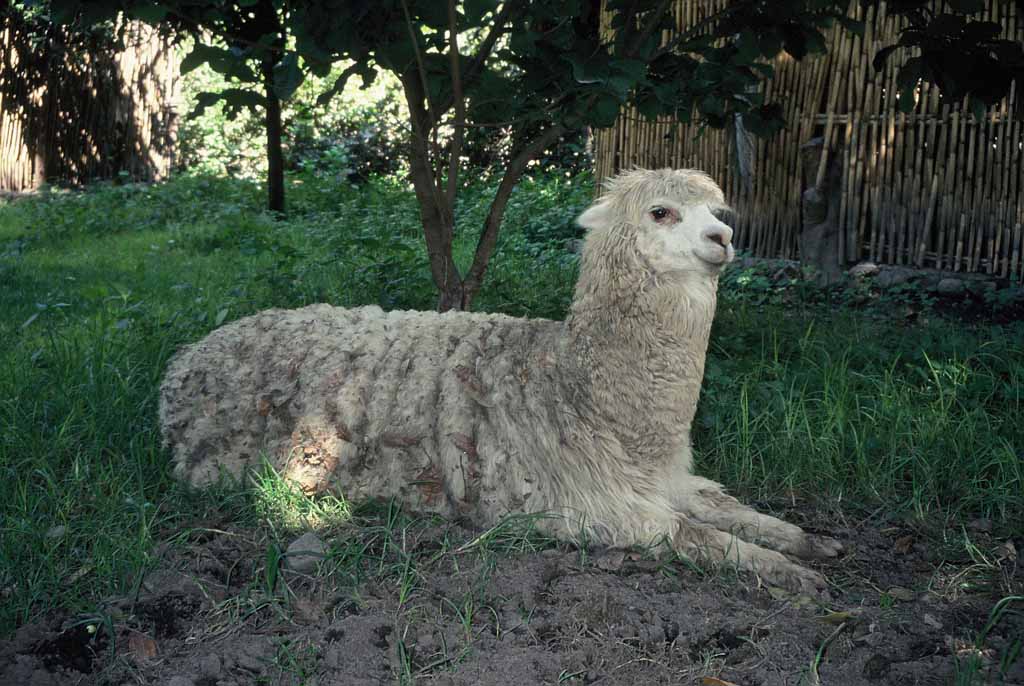Travelogue Peru 2006
Colca Canyon – Part 2
After visiting Cruz del Condor Ingrid and I left the group and continued on our own. We had left most of our luggage in the hotel in Arequipa and carried only the most important things in our day packs. In four hours we slowly walked to the village Cabanaconde enjoying the nature. From the hotel we had a copy of a hand drawn map with the most important hiking paths between the villages of this part of the canyon. This map helped us a lot though we did not find the first path we wanted to take (of course there are no signs, paths are sometimes no more than a hardly visible trail between the stones). Please, whenever I write something about hiking in the following paragraphs, add things like “magnificent landscape, wonderful view“ because it would be very repetitive if I would write it every time. After just a couple of minutes we saw another condor flying some ten meters over our heads probably closer to us than any condor to any other tourist that day.
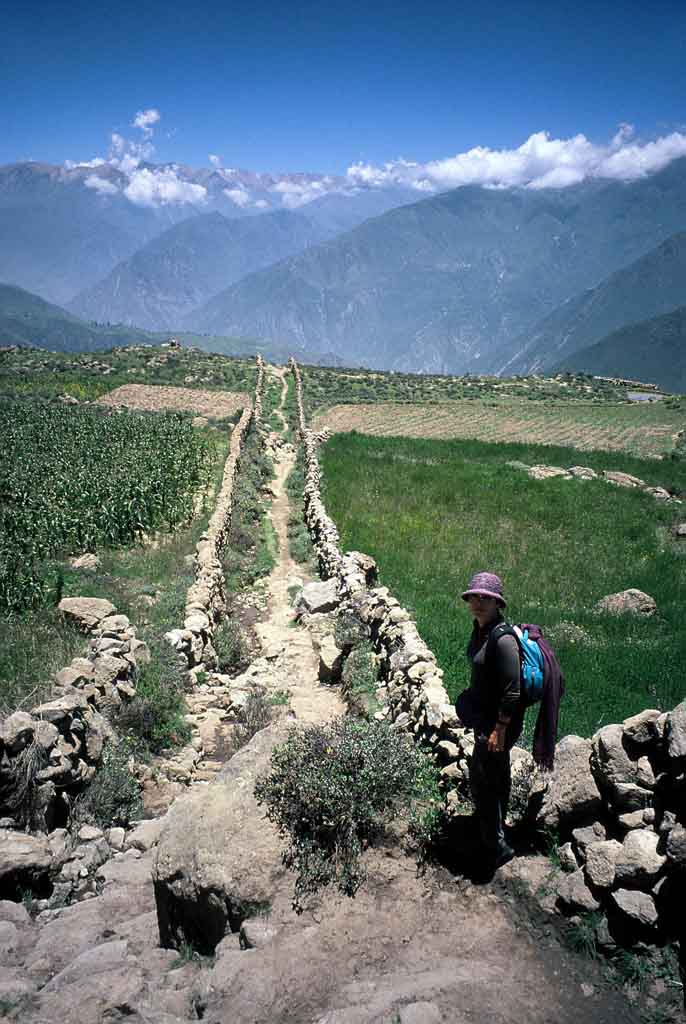
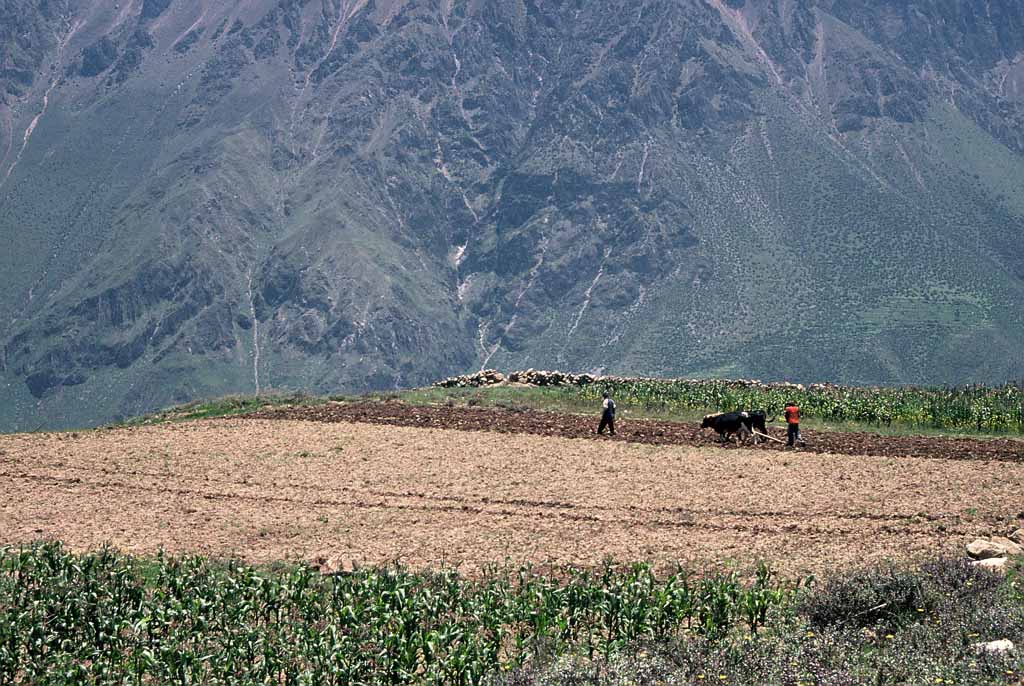
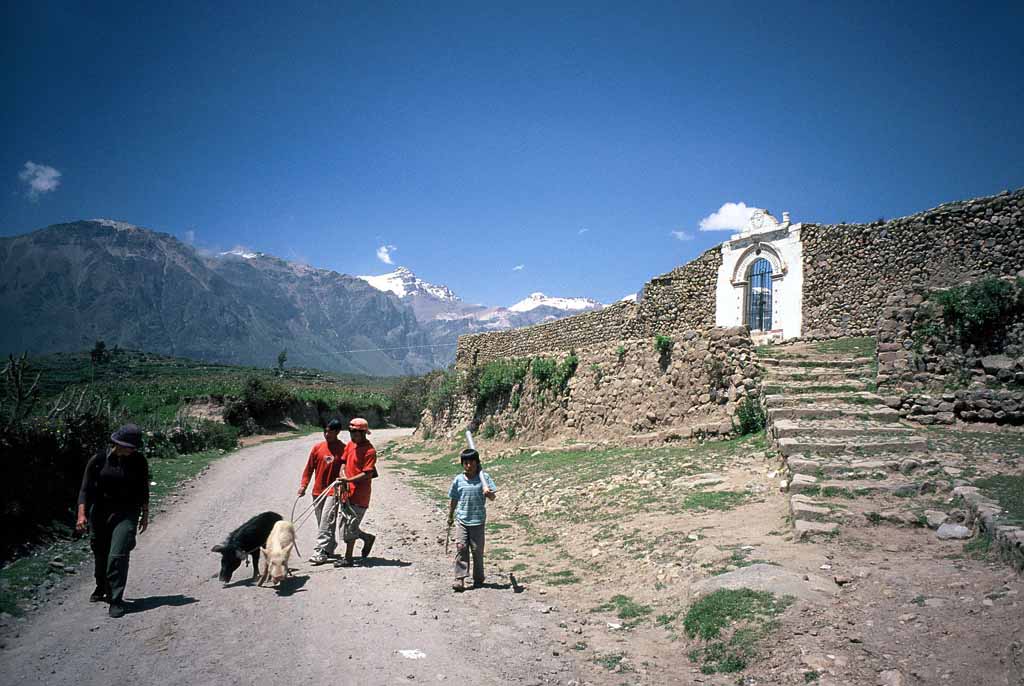
We had lunch in Cabanaconde and then went down 1000 meters in altitude to an oasis at the bottom of the valley which has a significant warmer climate than the surrounding area and where you can sleep in tiny cottages, eat simple but good food and relax in nice swimming pools.
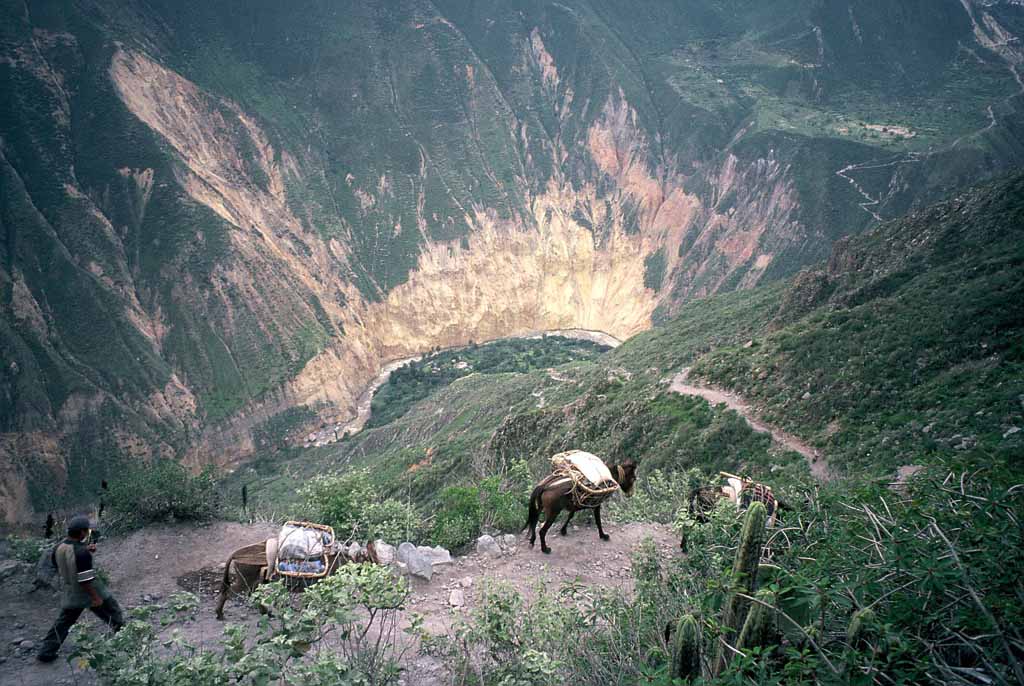
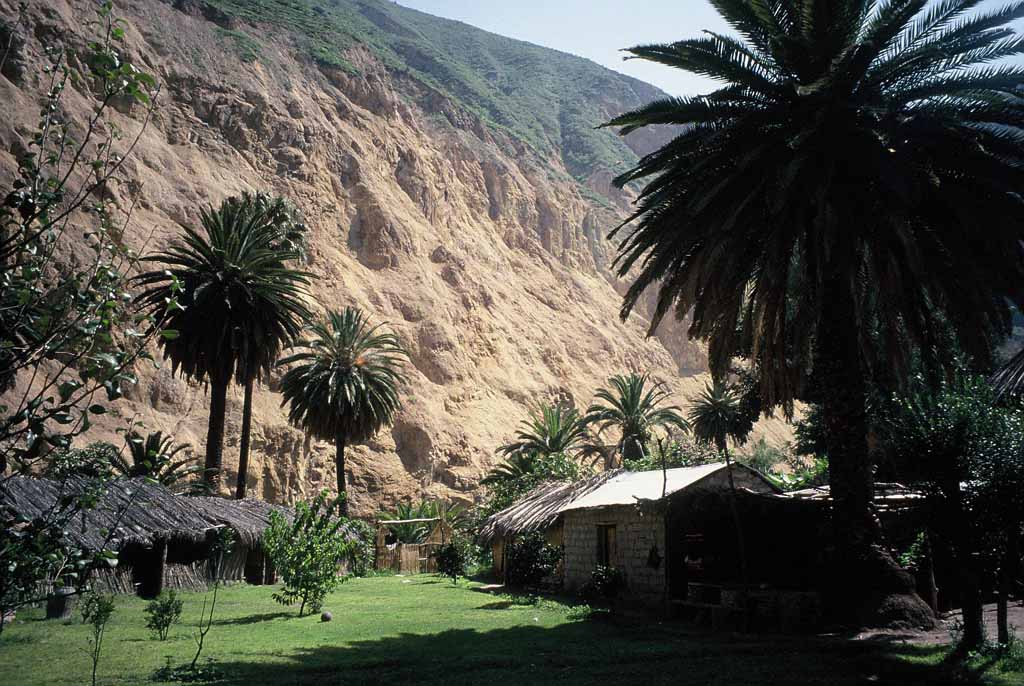
There is no electricity, no telephone. But in only two months there will be, in the oasis as well as in the villages on the other side of the canyon. Till now the three owners of the „hotels“ of the oasis agree that they don’t want any electricity in the oasis which would only disturb the idyll. I wonder how long they will keep up this spirit. We stayed in the „Oasis Paraiso“, which looked best to us, particularly because of their nice garden where you can find palm trees and between them lots of different animals: Sheep, mule, donkey, alpaca, chickens, dogs, cats. And I have never seen so many dragon flies at once.
Attention, I will now give you two important lessons:
First lesson: How to distinguish the different kinds of “camels of the Andes“.
There are:
- Vicuñas, the smallest ones which almost look like deer. They only live savagely, cannot be tamed and run away as soon as a man gets close to them. Anyway they are rounded up once a year and get sheared. Their light brown fur makes the best wool.
- Llamas, anybody knows them, knows how they look like.
- Alpacas, nobody knows their name. They look like llamas but have more fur in the face. Their wool is better than the one of llamas and they taste better.
- Guanakos: they are so rare that really nobody knows how the look, at least I don’t.
Second lesson: How to interact with alpacas? This lesion should also apply to llamas.
Imagine an alpaca in front of you, ears folded back, baring its teeth and making strange sounds. Then there are the following two possibilities:
a) Look into the alpacas face and ask “Hey, what’s wrong with you?“
b) Turn away quickly and step back if possible.
Well I can tell you that option (a) is not toooooo good. The alpaca was preparing for the famous spitting, that’s what was wrong with it. In my support I want to add that I already had petted many llamas and alpacas and none of them spitted. The spitting actually was a rough spray of alpaca salvia and half digested, stinking grass (they are ruminants!). Right into my face. Yuck! How gross. On the other hand I really had to laugh and I was on my way to take a shower anyway.
